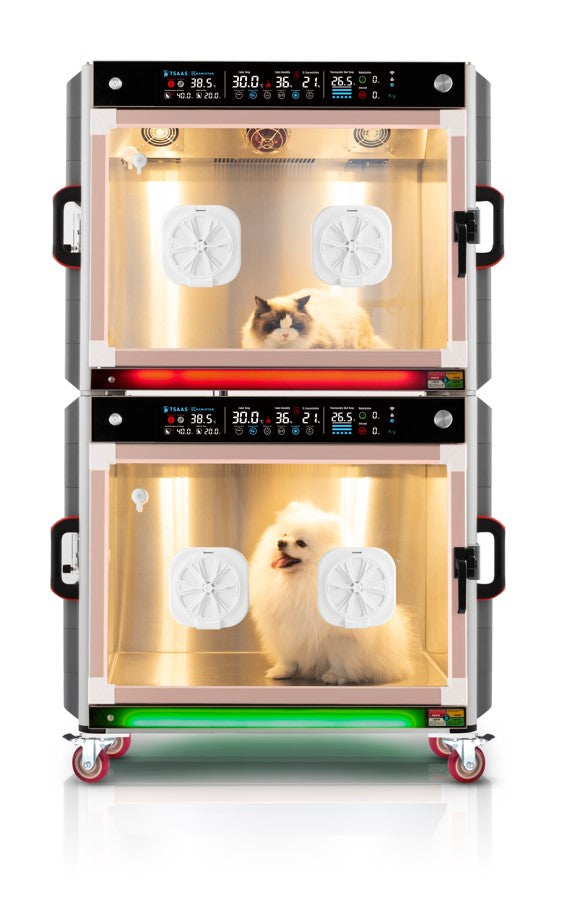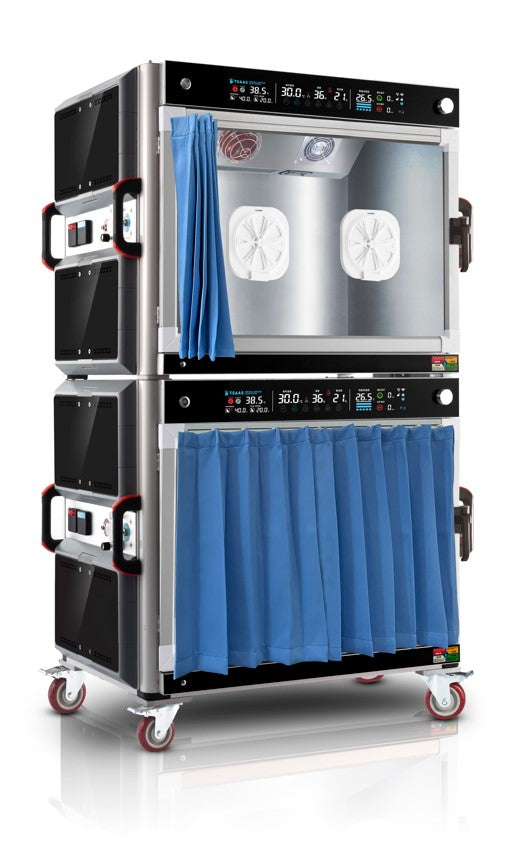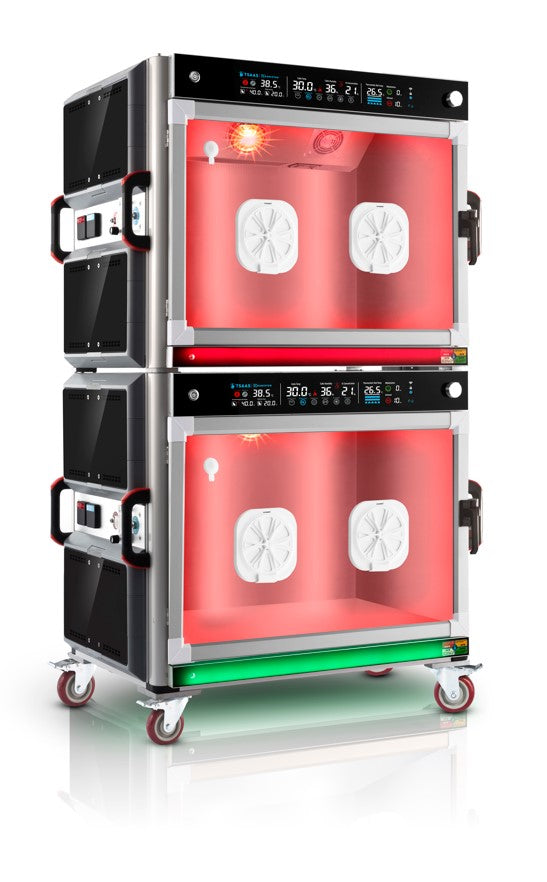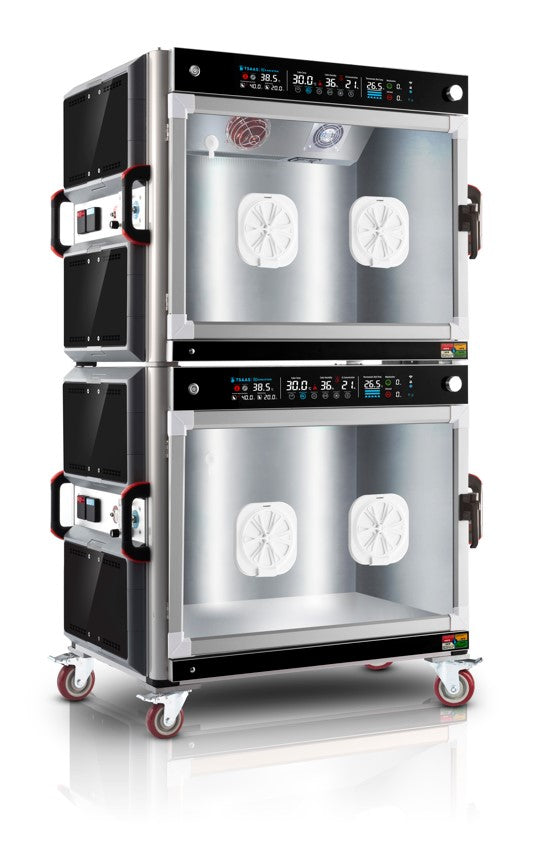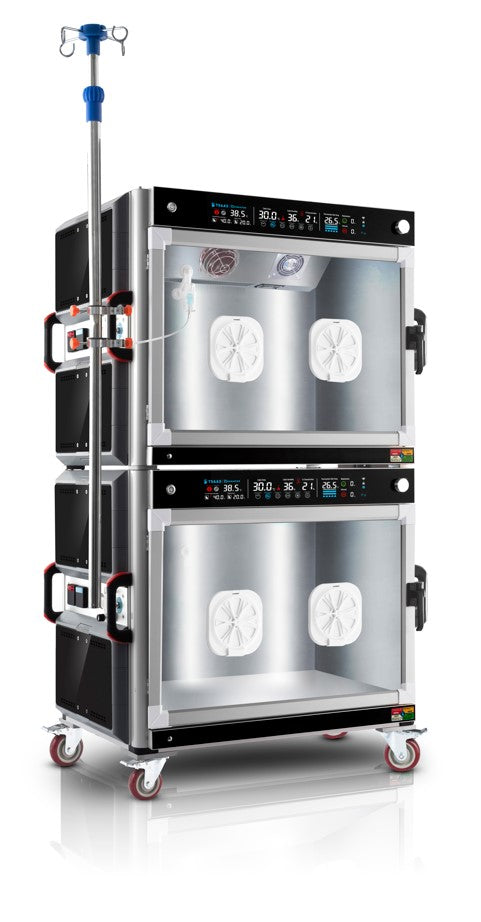Description
Click here to download the PDF catalog
Main Functions
1. Accurate temperature control
The TSAAS ICU heating system is equipped with an overhead double duct circulating heating system and a thermostatic bed system to ensure uniformed temperature in the cabin; Relying on the semi-conduction system in thermostatic bed, TSAAS ICU can provide quick cooling at the bottom, where the patient can have their full abdomen in contact with the floor to help cool the body. Other ICU models help cool animal patients by using compressor refrigeration. While this method does cool down the chamber, it comes at a negative cost to the care of your animal patient. Compressor refrigeration blows air into the compartment, which can cause unwanted cross contamination. It also creates a direct cold air stream that blows on the animal, creating an overall uncomfortable situation for a patient trying to heal. Additionally, most compressor refrigeration coolers are very noisy, making it difficult to maintain a peaceful environment for skittish or post-op patients. In the TSAAS ICUs, we use a thermostatic bed refrigeration, replacing cold air refrigeration with “cold compress refrigeration”. With this method, the floor of the unit will help cool the animal without disturbing the warm ambient atmosphere, allowing you to help your patient get to a comfortable body temperature without putting them in harm’s way.
To effectively care for an animal patient, a method to cool the ICU is needed. However, because most animal facilities are in airconditioned spaces, a compressor refrigeration unit is not needed. Rather, a comfortable thermostatic bed for a quick cooling of a pet patient’s body in cases of high fever, heat stroke or hyperthermia is more effective and efficient in caring for animals. An optional add-on compressor refrigerator is available, which may be needed when the facility is not well air-conditioned.
2. Relative Humidity Controls Heating System:
Unlike most ICUs on the market with a singular heating fan on the ceiling, our heating system has both a left and right duct that create a cross circulation. With a dual heating duct system, our ICU can ensure an even temperature distribution in the enclosure where a single duct can only unilaterally heat. In addition to the cross circulation, the thermostatic bed can also provide a source of heat at the floor of the enclosure. No matter where the animal is resting, a consistency in temperature can be maintained. Whether heating or cooling the enclosure, our ICU can maintain adequate relative humidity levels for your pet patients. Generally, a comfortable range for most animal patients is 45%-55% relative humidity. With our ICU machine you can achieve high temperatures with low humidity to help meet the requirements needed for some treatments. You can also achieve an environment with high temperature and high humidity in cases where 65%-75% relative humidity is needed

3. Oxygen Containment
For proper oxygen treatments, an ICU must provide an airtight compartment, precise oxygen control, and a safe ventilation system. Our TSAAS units do just that to help you achieve a desired level greater than or equal to 40% oxygen concentration. The airtight cabin can easily reach 60% oxygen concentration within one hour at a flow rate of 10L/min (93%+). The emergency vent automatically opens when the oxygen concentration is lower that 18% or there is a power outage.

4.Triple purification function
Each TSAAS unit has a triple purification system. The first is an easy-to-use ultraviolet disinfection light. This light uses ultraviolet rays with a wavelength of 200nm to 280nm. Ultraviolet rays at this frequency have been proven to eradicate bacteria and effectively kill microbial cells. Second, each unit is equipped with negative ion purification. High-concentration negative ion generators in a closed treatment chamber can significantly reduce odor pollution and help support the immune system of your pet patients. As a third measure of purification, we have equipped the machine an external cycle fresh air system. When oxygen supply is not required in treatment, the “external cycle” function can be turned on to help refresh and improve the cabin air quality.


